
7 shrubs for a housing estate garden
A selection of easy-care and highly ornamental bushes
Contents
Housing estate gardens, due to their small size and proximity, are subject to a number of constraints to avoid overshadowing neighbours and causing damage to the roadway. In a housing estate, at the property boundary, one should therefore avoid trees or “messy” bushes, overly vigorous and tall species, as well as suckering shrubs. This is not to mention the specifications of each estate, which often impose a selection of bushes for reasons of coherence and harmony, biodiversity choices, or local flora.
The shrubs for small gardens that we highlight in this advice sheet are all limited in size, particularly ornamental, easy to care for, of small growth, and adaptable from the north to the south of France.
→ Learn more about the regulations surrounding trees and shrubs in our advice sheet Planting Trees and Bushes: What Does the Law Say?
Calycanthus floridus
Also known as the anemone tree or Pompadour tree, the Calycanthus floridus is a wonderful small bush, very suitable for modest-sized gardens. If it remains relatively uncommon in our gardens, it is a mystery, as this American deciduous bush is truly ornamental when, at the end of spring, it displays its beautiful, astonishing flowers set against the foliage, cup-shaped with reddish-brown petals, resembling certain flowers of Magnolias or water lilies. They are delicately scented, borne at the tips of the branches, until August. Its habit is loose and rounded, with broad foliage that is a bright light green turning yellow in autumn. This is a completely hardy bush, able to thrive almost anywhere, in full sun or very light partial shade (the flowering is more spectacular in full sun), in acid or neutral soil that remains cool. Its size (approximately 2 m in height) and its almost exotic appearance make it well-suited for planting as a specimen or in a group.
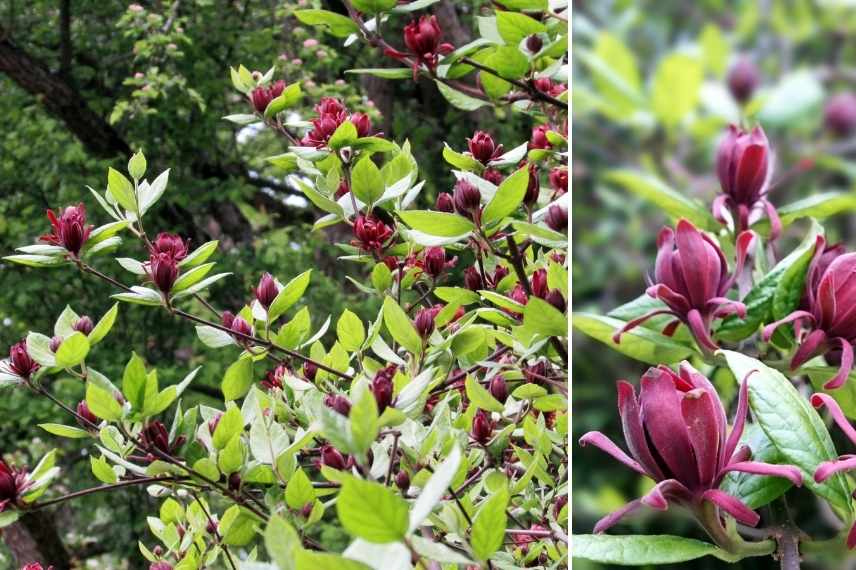
Calycanthus floridus
Sambucus 'Black Lace'
Here is one of the most well-known elderberries, the famous Sambucus nigra ‘Black Lace’ (also known as Sambucus nigra ‘Eva’), which is appreciated for its very dark purple, finely dissected foliage as well as its lovely pink spring flowering. It also remains small at maturity, reaching no more than 3 m in height with a spread of about 2 m. It will retain a beautiful hue in its foliage when planted in full sun. The flat inflorescences, initially pink then white, appear from May to June, transforming into dark red then black berries, which are melliferous. It is not particularly fussy about soil type, adapting very well to the soils found in housing estate gardens. Give it a nice spot in a hedge or a shrub border.
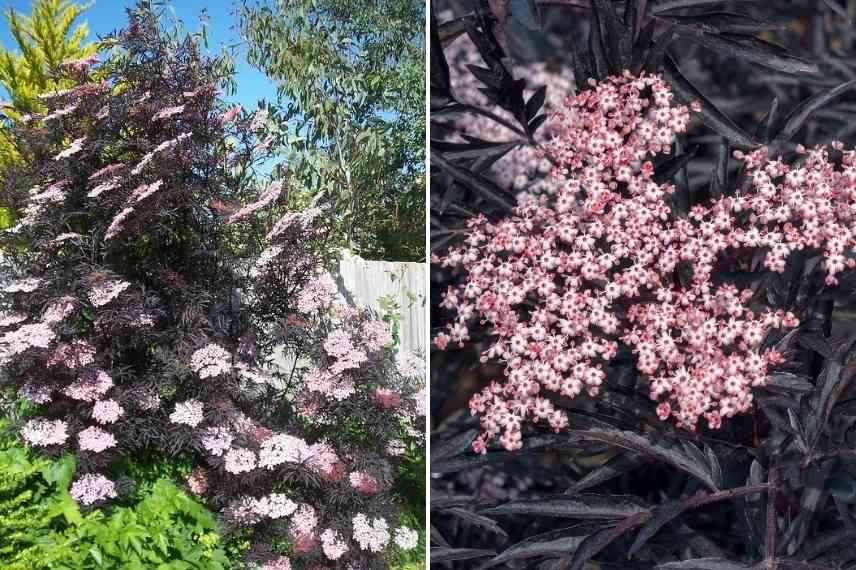
Sambucus nigra ‘Black Lace’ (© Leonora Enking)
Discover other Shrubs
View all →Available in 0 sizes
Available in 0 sizes
Available in 1 sizes
Available in 1 sizes
Available in 1 sizes
Available in 1 sizes
Available in 1 sizes
Available in 1 sizes
Available in 1 sizes
Amelanchier alnifolia 'Obelisk'
Serviceberry is one of the most remarkable deciduous bushes to plant in the garden, and for three reasons: a subtle white spring flowering, foliage that beautifully turns yellow in autumn, and berries that persist on the tree adding to its charm. Remaining small in size, they all easily fit into small gardens. The Amelanchier alnifolia ‘Obelisk’ has another string to its bow with its fastigiate silhouette (very narrow) which gives it proportions that are very useful in a small housing estate garden. Reaching 3.5m, up to 5m, it takes up little space as its spread is only 1.5m. This particular habit gives it a lot of character, without detracting from the charm of its spring adornments. It thrives in full sun or partial shade, in neutral or slightly acidic soil.

Amelanchier alnifolia ‘Obelisk’
Read also
7 shrubs for a city gardenLagerstroemia
Here is another interesting bush for various reasons, the Lagerstroemia or crape myrtle, which is particularly appealing in small garden plots where space may be limited for multiple specimens. The Lagerstroemia ‘Lilac Grand Sud’ boasts an extraordinary frilled mauve flowering that lasts for two long months, from July to September. Its leathery foliage takes on beautiful hues during the bud burst period and coppery tones in autumn before falling late, while its bark and silhouette reveal a true sculpture after a few years of cultivation. Its spreading crown and modest size, approximately 3m in height and 2m in width, along with its coppiced habit, make it a lovely small bush, adding elegance and grace to the garden.
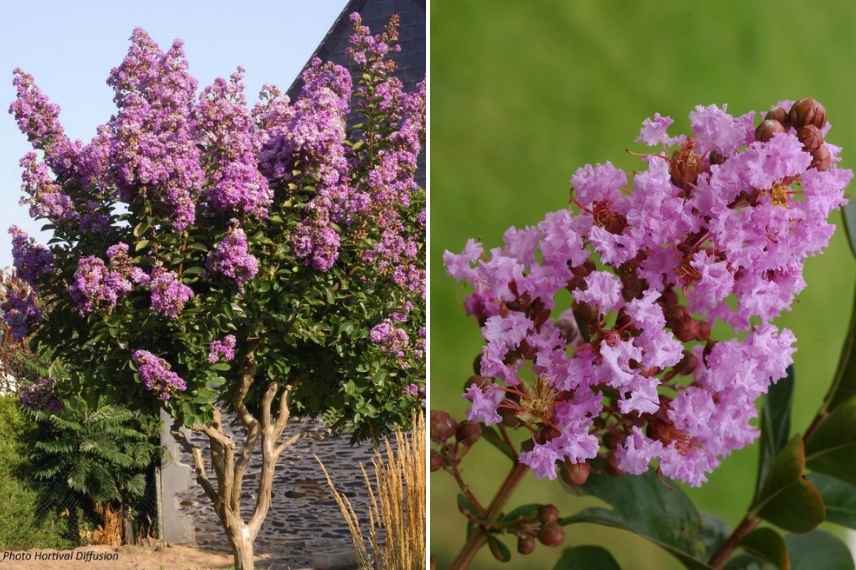
Lagerstroemia ‘Lilac Grand Sud’
Abelia
Remarkable evergreen bush with numerous qualities, the Abelia also comes in multiple varieties, providing a great choice for a housing estate garden: there are dwarf Abelias under 50cm tall for rockeries, up to Abelias grandifloras suitable for creating hedges, reaching heights of up to 2.50m. Using it in a housing estate allows you to enjoy both its evergreen (or semi-evergreen depending on the regions) foliage, dark green and shiny and its very long flowering with a myriad of small white and pink flowers. Vigorous, bushy, with a habit that is both compact and flexible, the abelia is an essential that will provide its elegant flowering until the first frosts in a mild climate! It is resistant to both pollution and sea spray, and has slightly lower hardiness compared to other shrubs in this selection, but still withstands temperatures down to -10°C.

Abelia grandiflora on the left and the variety ‘Caramel Charm’ on the right
Magnolias
Deciduous Magnolias are the stars of small gardens, and in housing estates, they bring a springtime poetry and elegance. You have plenty of choices among the numerous cultivars, which bloom in white, pink, or yellow, with deciduous magnolias often formed as coppiced (a multi-trunk ornamental habit that remains low).
If you dream of immaculate whiteness to start the first months of the year, look to the classic Magnolia stellata: this species is ultra graceful with its waxy white star-shaped flowers sometimes tinged with pink in March-April, even before the leaves appear, on the naked wood. It is one of the most floriferous magnolias, adopting a bushy and compact habit, very ramified, then gradually spreading, ultimately reaching 3m in height with a similar spread. It grows slowly but has the advantage of flowering in the first few years after planting.
Another magnolia, another atmosphere with the Magnolia denudata ‘Sunrise’: far from the Japanese garden, this original cultivar brings you into a more colourful universe, thanks to its bicoloured cream-white and fuchsia flowers. It remains even more compact than Magnolia stellata, displaying a rounded silhouette. The tulip-shaped flowers appear in April or May, depending on the region, with the foliage also unfolding just after. Very hardy, you can plant this Magnolia in exotic or contemporary-inspired gardens, in full sun or partial shade.

Magnolia stellata (© Alh1) and Magnolia denudata Sunrise
Acer palmatum 'Orange Dream'
Japanese maples make perfect subjects for estate gardens: remaining medium-sized, or even very compact, they are hardy, ornamental from spring to autumn, where they display even more of their charm, and are quite useful for enhancing shaded to partially shaded areas. They also thrive very well in pots for smaller gardens. These are acid soil shrubs, a necessary condition for their cultivation.
Among the wide range of Acer palmatum (with leaves divided into palmate lobes), the cultivar ‘Orange Dream’ is a delight for the eyes! Its leaves, which appear quite late in spring, unfurl in a stunning bright yellow edged with orange, then turn to a bright light green in summer, and finally take on sublime hues in autumn, wavering between orange and red. The Acer palmatum ‘Orange Dream’ needs partial shade to thrive (ideally in the east), and it will adopt a beautiful spreading silhouette over the years, growing up to 3 m tall at most with a spread of 1 to 2 m.
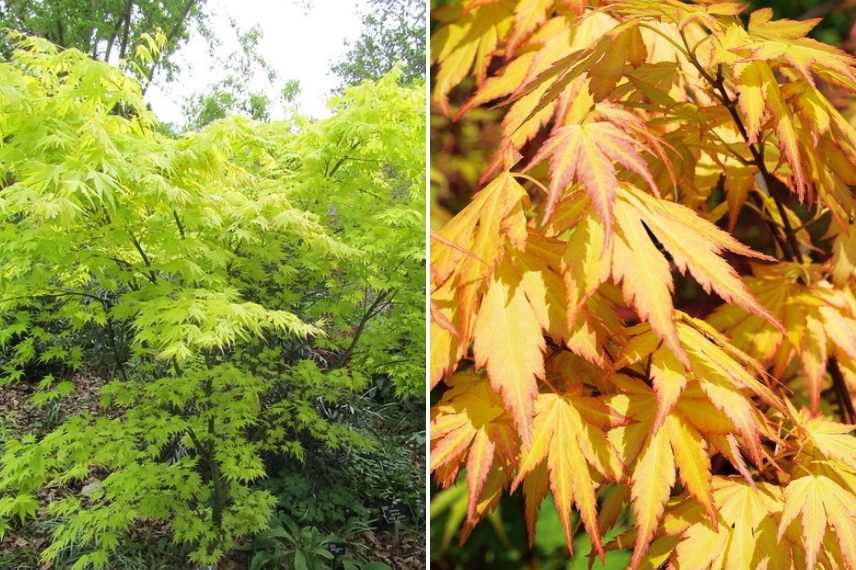 Acer palmatum Orange Dream: summer foliage (©Leonora Enking), and to the right autumn foliage
Acer palmatum Orange Dream: summer foliage (©Leonora Enking), and to the right autumn foliage
- Subscribe!
- Contents


































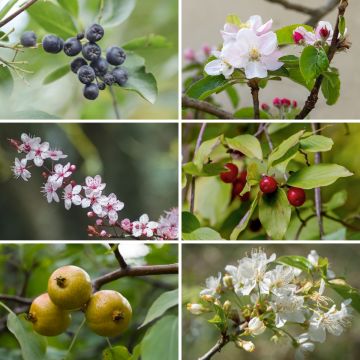
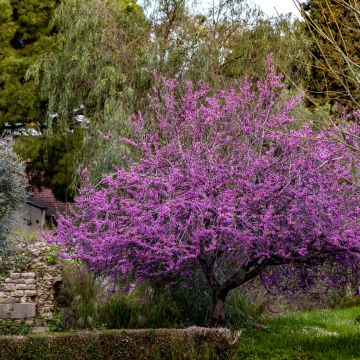
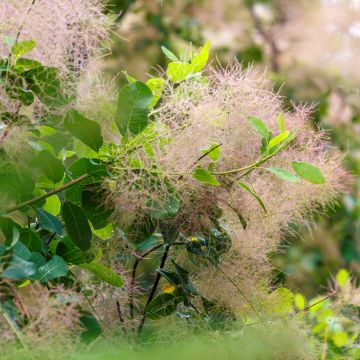

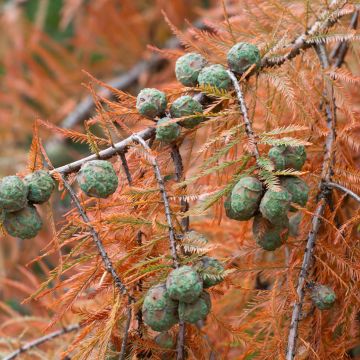

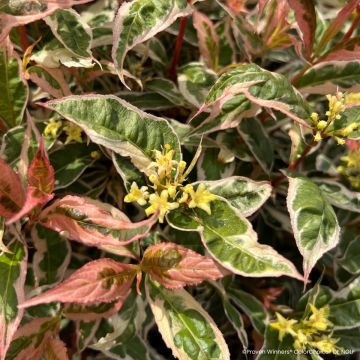

Comments